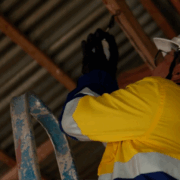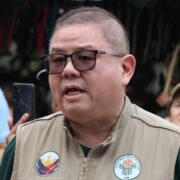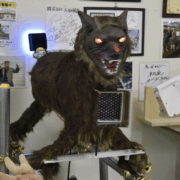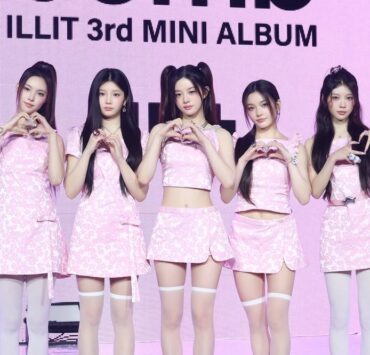Between movement and meaning
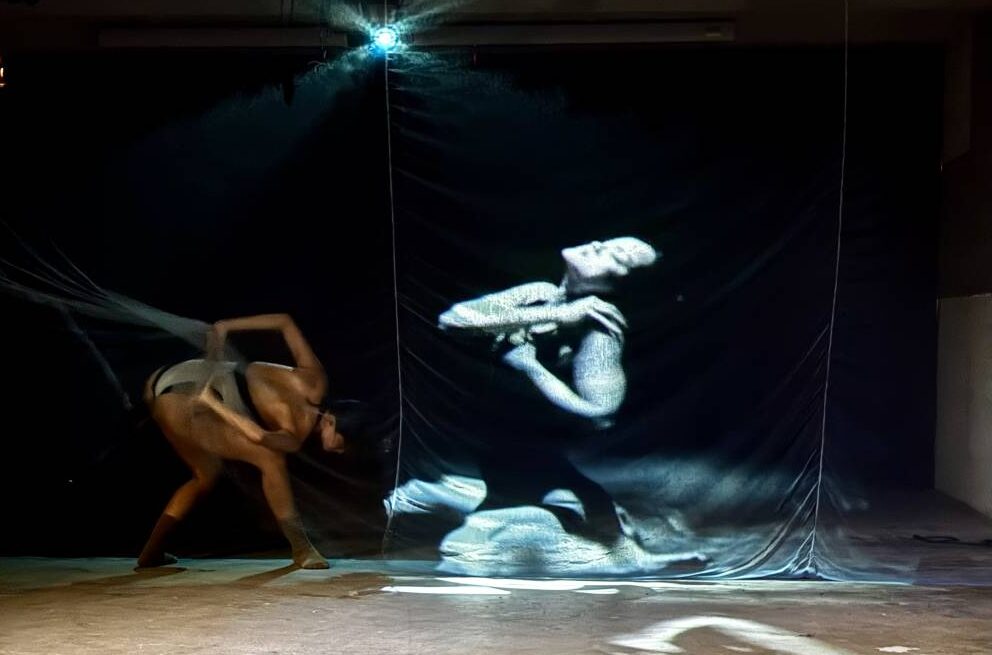
At WhyNot, a space known for fusing experimental art forms, performance often spills across disciplines, blurring lines between movement, media, and meaning. But during a recent technical dress rehearsal of “Topography of the Self,” it was the raw, unembellished physicality of dance—unfiltered by projection or soundtrack—that took center stage.
Staged by Galaw Co, a small but sharply articulate contemporary dance company, the triptych of works pared down performance to its essential gestures, exploring the layered terrain of identity with quiet, deliberate intensity.
“I Was,” a duet by choreographer Abby Bonifacio, 27, unfolded like a letter to one’s younger self—vulnerable, searching, and ultimately reconciled. It began with Natalie Duque seated at a table, tracing its edges with her fingers before moving toward an unseen threshold.

Across this imagined portal stood Jacinta Pascual, her younger self, mirroring her gestures. The tension built: mimicry gave way to conflict, culminating in a primal scream—an eruption of buried fear. The two clashed, then embraced. The portal reappeared, the cycle resumed, and the piece closed in a quiet, reflective exchange between the Past and the Present. Pascual and Duque threw themselves into their roles with intensity and conviction.
Improvisation, guided by Bonifacio’s hand, allowed the emotional authenticity to surface. “I really like the rawness of improvisation,” she said. “Aside from the choreography, I wanted them to actually meet in the mirror. In the end, they’re talking—remembering that all they have is themselves.”
She credited her choreographic voice to a shared sensibility. “It’s the exposure we have to each other’s work. We know what we’re drawn to and try to find it on our own. All the choreographers and teachers I’ve worked with have shaped me—especially PJ (Rebullida).”
For Bonifacio, “I Was” marked a personal turning point. “This is my first opportunity to say something,” she said. “I was feeling lost. But I remembered—when I was a kid, I choreographed silly dances with my grade school friends. I had it then. Somewhere along the way, I learned to dim myself. This piece was about reconnecting—and healing—that inner child.”

Socmed and self-image
In “Filtered Realities,” Lili Andres, 25, explored social media’s grip on self-image—how the desire for validation blurs the boundary between persona and person. “For someone my age, it’s not exactly new,” Andres said. “But it’s something we constantly talk about—how you present yourself online, how that affects you internally and externally, and how it looks to others.”
She cast Paloma Laforteza, whose expressive limbs and model-like presence embodied that internal tension. Drawing on Gaga technique, which favors impulse over form, Andres shaped choreography that let the body speak from within. In one striking moment, Laforteza’s legs arched overhead like the blade of a plow, head nestled between her knees, her hand tracing her thigh like imagined terrain. She circled a leg, stood up and turned in ballet attitude—one leg lifted and bent, like the curve of a question mark, then she bent fully over with her arms lifted behind her—searching for herself through touch.
The movement echoed Andres’ penchant for extremes. “I like opening up completely, then shrinking down to almost nothing,” she said. Laforteza’s expansive gestures retracted into moments of quiet intensity, underscoring the choreography’s dual nature.
A translucent scrim divided the stage, falling away when the character “chose” to reveal a more intentional side of herself. In several scenes, Laforteza danced alongside video projections of herself, rendered by visual artist Victor Balanon. Structured like a TikTok feed—fragmented, suggestive, fleeting—the work ended with Laforteza wrapping herself in the scrim. “I didn’t want to force a meaning,” Andres said. “Maybe she’s finding comfort in self-presentation. Or maybe she’s trapped, cocooned in a version of herself that’s no longer voluntary.”
“Under the Rock,” created and performed by Rebullida, offered a visceral counterpoint to the introspective, youth-centered tone of the evening. Rebullida confronted fear itself as a challenge of physical prowess at age 44.
Circle of phobias
Before the show, audience members were asked to write their phobias on slips of paper, which were arranged in a “circle of phobias” at center stage. “My mom always told me not to play with bugs,” Rebullida said. “They were dirty, poisonous, could crawl into your bloodstream. But I’ve come to see that if you understand them, there’s nothing to fear.”
That insight drove the piece—a call to look under the rock, to face what writhes beneath. Balanon’s insect footage and a personal video of a bite, swelling, and symbolic metamorphosis played across the backdrop. Multimedia artist Marco Ortiga designed a soundscape—ambient noise layered with text from philosopher Alan Watts. “We’ve been conditioned to see the world a certain way,” Watts declared. “But it’s up to us to give things meaning.”
Rebullida embodied that transformation with choreography that was both ardent and introspective. He leapt cat-like onto tree stumps, spun in pirouettes with his shirt covering his face, and balanced in prolonged one-legged squats and headstands. In one moment, his lifted leg circled slowly through space, his supporting leg unshaken—a study in insect-like precision and balance. “Insects are great balancers, even on their tiny legs,” he noted.
He struck a boat pose, legs extended, arms reaching forward, hovering like a beetle midair—strength coiled, ready to dart. Later, in the Fallen Angel pose, he collapsed onto one shoulder, legs pedaling through the air as if cycling on an invisible thread—an insect in mid-tumble, defying gravity with instinctive grace.
Though he came to dance in his 20s, Rebullida has honed a physical language that melds balletic technique with contemporary dance, jazz, dialogue, and a grounded, animalistic force. “When you’re dancing, there’s a sense of generosity,” he said after the show. “I can only give what I have. And I work hard to be in shape. So why not show what a dancer in shape can do—regardless of age?”
The evening proved that experimental doesn’t mean unformed. These young choreographers presented work with clear intention, structural rigor, and emotional resonance. Enhanced by textured soundscapes and edgy video design, each piece found its voice—whether through abstraction, confrontation, or personal reflection. Rebullida’s performance deepened the experience, bridging dance and theater with raw presence and spontaneity. If this is where Philippine contemporary dance is headed, it’s a direction well worth watching.


